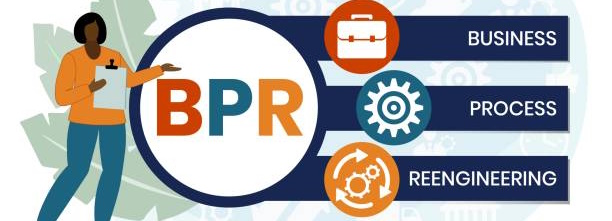Process Re-engineering: the right way
- Niti Deherkar
- /
- October 16, 2023
- /
- Agile

Process re-engineering isn't just about making incremental improvements; it's about fundamentally transforming how work gets done. Done right, it can lead to significant gains in efficiency, quality, and customer satisfaction. However, the journey can be fraught with challenges if not approached strategically. In this guide, we'll explore the key principles and best practices for re-engineering processes the right way.
Understanding Process Re-engineering
-
Definition and Scope: Define process re-engineering and its objectives. Emphasize the importance of rethinking existing processes from the ground up rather than just tweaking them.
-
Identifying Opportunities: Conduct a comprehensive analysis to identify processes that are ripe for re-engineering. Look for areas of inefficiency, bottlenecks, and opportunities for automation or streamlining.
Stakeholder Engagement
-
Stakeholder Alignment: Engage key stakeholders early and often to ensure their buy-in and support throughout the re-engineering process. Communicate the benefits and rationale behind the changes transparently.
-
Cross-functional Collaboration: Foster collaboration across departments and teams involved in the process. Leverage diverse perspectives and expertise to design solutions that address the needs of all stakeholders.
Process Redesign
-
Process Mapping: Map out the current state of the process to identify pain points and inefficiencies. Use techniques like swimlane diagrams or value stream mapping to visualize the flow of work and dependencies.
-
Designing the Future State: Envision the ideal future state of the process based on identified objectives and stakeholder input. Focus on simplification, standardization, and elimination of non-value-added activities.
Implementation and Change Management
-
Pilot Testing: Pilot test the redesigned process on a small scale to validate its effectiveness and identify any unforeseen issues. Gather feedback from users and iterate as necessary before full-scale implementation.
-
Change Management: Develop a comprehensive change management plan to support employees through the transition. Provide training, resources, and ongoing support to ensure adoption and mitigate resistance.
Continuous Improvement
-
Feedback Loops: Establish mechanisms for collecting feedback from stakeholders and users post-implementation. Use this feedback to identify further opportunities for improvement and refinement.
-
Iterative Approach: Embrace an iterative approach to process re-engineering, continuously seeking ways to optimize and enhance performance. Encourage a culture of experimentation and innovation.
Measurement and Evaluation
-
Key Performance Indicators (KPIs): Define KPIs to measure the success of the re-engineered process. Track metrics such as cycle time, throughput, quality, and customer satisfaction to gauge performance.
-
Regular Reviews: Conduct regular reviews and evaluations of the re-engineered process against established KPIs. Use these insights to inform future iterations and adjustments.
On a Final Note
Process re-engineering is a journey, not a destination. By following these principles and best practices, organizations can unlock new levels of efficiency, agility, and competitiveness. Remember, the key to success lies not just in making changes but in driving meaningful transformation that delivers lasting value to both the organization and its stakeholders.
